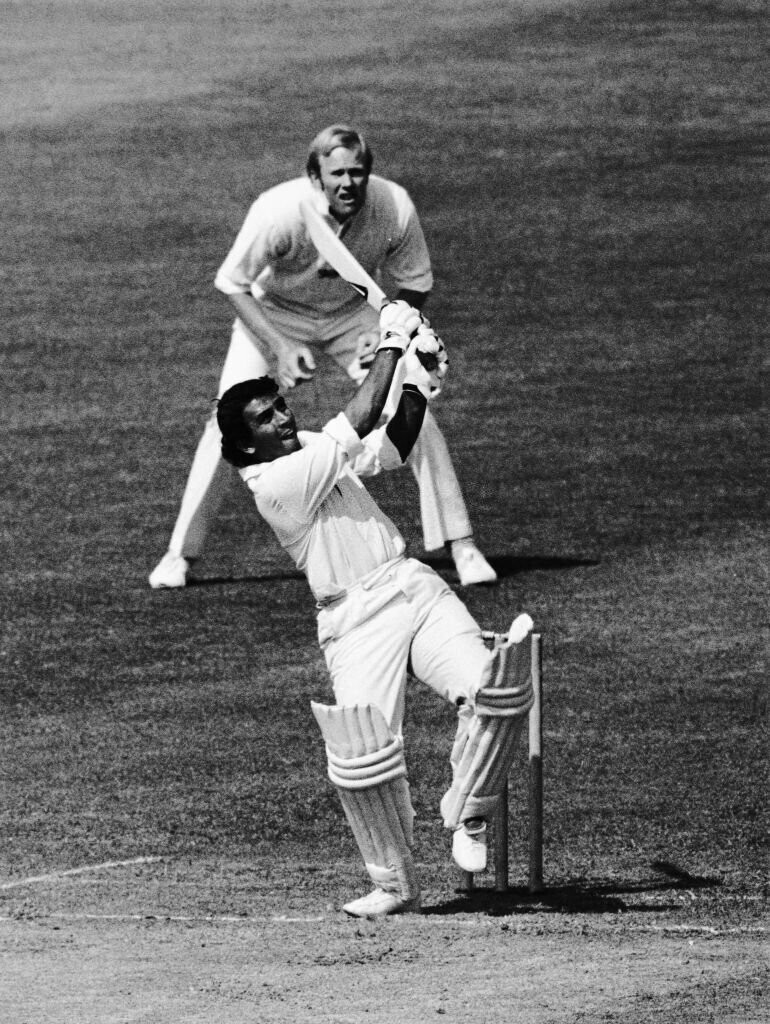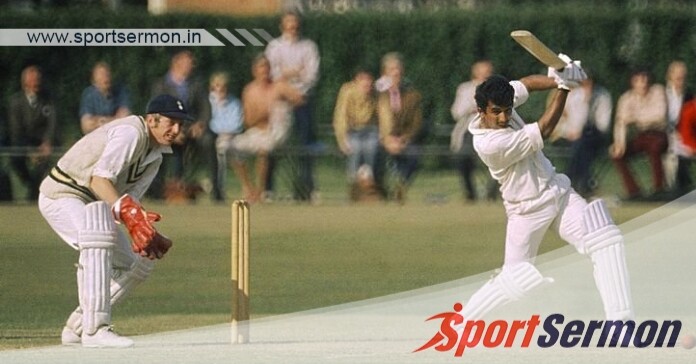Sunil Gavaskar’s 36 not out in 174 balls: One of the strangest innings in ODI history
Sunil Gavaskar is one of the greatest batsmen of all time. He was a prolific run-scorer in Test cricket, and he also had a successful ODI career. However, there is one innings in Gavaskar’s ODI career that is remembered for the wrong reasons: his 36 not out in 174 balls against England in the 1975 World Cup.
The 1975 World Cup was the inaugural edition of the tournament, and it was held in England. India and England met in the opening match of the tournament at Lord’s. England batted first and scored a mammoth 334 for 4 wickets, thanks to a century from Dennis Amiss.
India were set a daunting target of 335 to win. Gavaskar opened the batting for India, and he started slowly. He scored just 12 runs off the first 50 balls he faced. Gavaskar’s slow batting frustrated the Indian fans, and they started booing him.
Despite the boos from the crowd, Gavaskar continued to bat slowly. He scored just 24 runs off the first 100 balls he faced. Gavaskar’s batting was so slow that the Indian innings came to a standstill.
15 Best Indian Cricket Team Moments in 20th Century Images
Gavaskar eventually reached his 36 not out in the 59th over of the innings. He faced 174 balls in total, and he hit just one four. India lost the match by 202 runs.
Gavaskar’s 36 not out in 174 balls is one of the slowest innings in ODI history. It is also one of the most controversial innings in ODI history. Many people believe that Gavaskar should have been more aggressive in his batting, especially considering the fact that India were chasing a big score.
However, Gavaskar defended his batting. He said that he was trying to play a responsible innings and avoid getting out early. Gavaskar also said that the English bowlers were bowling very well, and that he found it difficult to score runs.
Gavaskar’s 36 not out in 174 balls is a reminder that even the greatest batsmen can have bad days. It is also a reminder that there is no one right way to bat in ODI cricket. Different batsmen have different styles, and what works for one batsman may not work for another.
Analysis of Gavaskar’s innings

There are a number of possible explanations for Gavaskar’s slow batting in the 1975 World Cup match against England. One possibility is that Gavaskar was simply having a bad day. Even the best batsmen have bad days, and Gavaskar was no exception.
Another possibility is that Gavaskar was playing too defensively. Gavaskar was a very cautious batsman, and he was often reluctant to take risks. This cautious approach may have been counterproductive in the 1975 World Cup match, as India were chasing a big score.
It is also possible that Gavaskar was intimidated by the English bowlers. The English team of the 1970s was one of the strongest teams in the world, and their bowling attack was particularly formidable. Gavaskar may have been hesitant to attack the English bowlers, as he was worried about getting out.
Finally, it is also possible that Gavaskar was playing according to the then prevalent mindset in Indian cricket. At the time, Indian batsmen were generally more cautious than batsmen from other countries. It was the match of the first edition of the World Cup.
Possibly, India was overwhelmed by the daunting target and they found themselves in a indecisive position where the team couldn’t find an applicable approach for such a big target. India had lost only 3 wicktets in that match and only Gundappa Viswanath could get past the strike rate of 60.
Whatever the reason for Gavaskar’s slow batting, it is clear that his innings in the 1975 World Cup match against England was a major disappointment for Indian fans. India had a strong team in the 1975 World Cup, and they were expected to challenge for the title.
However, Gavaskar’s slow batting in the opening match of the tournament set the tone for a disappointing tournament for India.
Impact of Gavaskar’s innings on Indian cricket
Gavaskar’s 36 not out in 174 balls had a significant impact on Indian cricket. It led to a lot of criticism of Gavaskar, and it also led to a debate about the style of batting that Indian batsmen should adopt in ODI cricket.
In the next match that India played against East Africa, Sunil Gavaskar played a decent knock, scoring 65 runs in 86 balls. India easily won the match by 10 wickets.
In the years following the 1975 World Cup, Indian batsmen started to become more aggressive in their batting. This was due in part to the influence of players like Kapil Dev and Ravi Shastri, who were not afraid to take risks and attack the bowlers.
Gavaskar himself also became more aggressive in his batting in the later stages of his career. He realized that he needed to adapt his game to the changing demands of ODI cricket.
Gavaskar’s 36 not out in 174 balls remains a controversial innings. However, it is also an innings that has had a lasting impact on Indian cricket. It led to a debate about the style of batting that Indian batsmen should adopt in ODI cricket, and it also helped to pave the way for a more aggressive generation of Indian batsmen.
Sunil Gavaskar is one of the greatest batsmen of all time. However, his 36 not out in 174 balls against England in the 1975 World Cup is one of the strangest innings in ODI history.
Gavaskar’s slow batting in the 1975 World Cup match against England was a major disappointment for Indian fans. However, it is an innings that has also had a lasting impact on Indian cricket. It led to a debate about the style of batting that Indian batsmen should adopt in ODI cricket, and it also helped to pave the way for a more aggressive generation of Indian batsmen.

